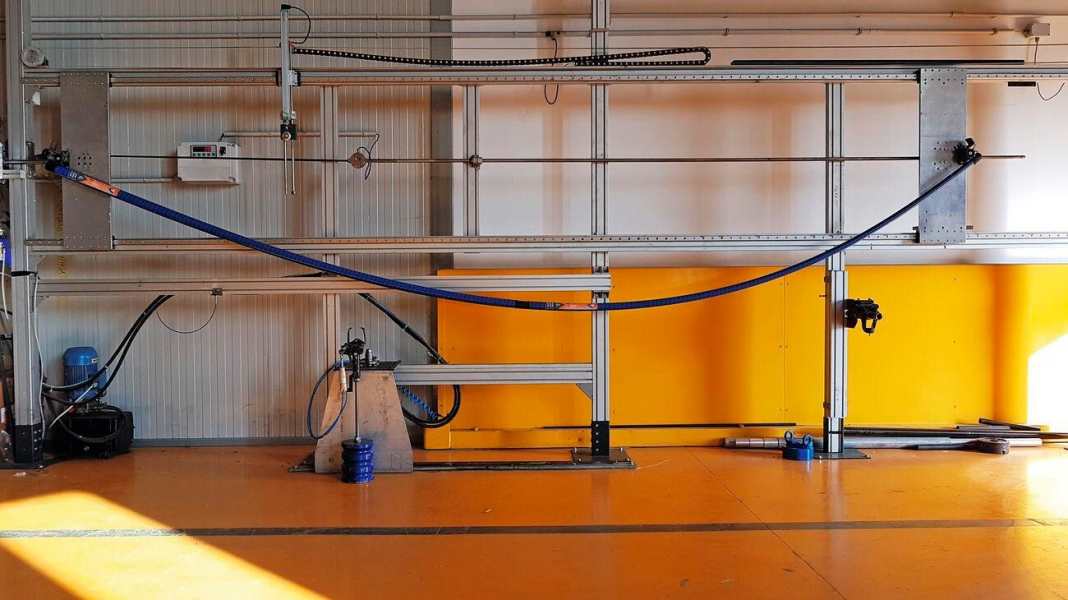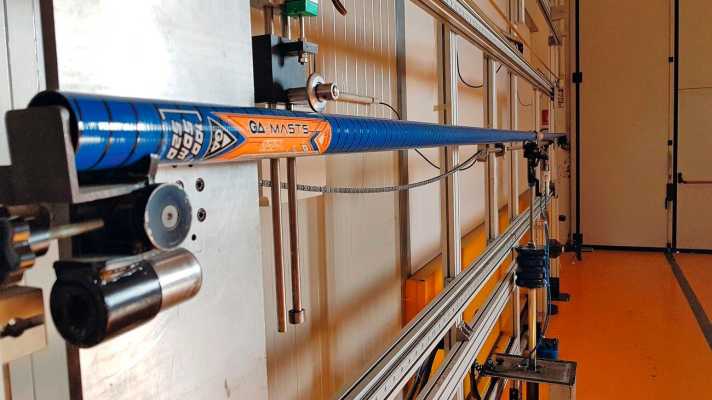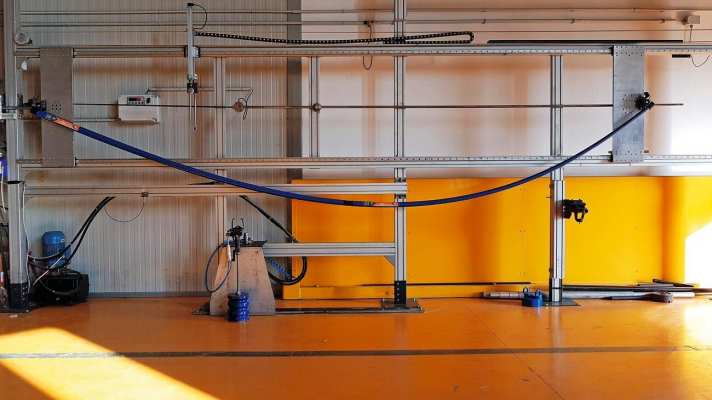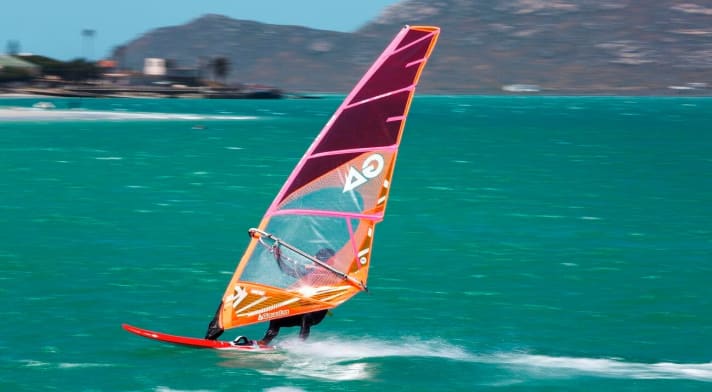

surf: Peter, for a long time you stuck to the hardtop bending curve, where the masts bend less in the upper section. Why the change now?
Munzlinger: That's right, we stuck to the hardtop bending curve for a long time. To determine the bending curve of masts, they are fixed at the ends and loaded with 30 kilos in the centre. Starting from the zero point, the deflection is then measured at a quarter, three quarters and exactly in the centre. With our old hardtop bending line, the top area bent less than with constant-curve masts, so the top areas were stiffer. We had originally adopted this mast curve from our former sail designer Barry Spanier. The masts worked very well because they were extremely comfortable to sail. In recent years, we have slowly modified our masts a little more in the direction of a constant curve. In 2015, we decided to switch to Constant Curve for our race masts with 100 per cent carbon because I had simply exhausted the design possibilities on hardtop masts - I had reached the limit of what was possible.

What was the limiting factor here?
The constant-curve bend has simply opened up completely new possibilities for me to develop the sails further. For example, it is always difficult to generate a nice, bulbous profile in the lower part of the sail on a hardtop mast, because the relatively softer lower part always pulls some profile out of the sail. Our 2017 sails have a more pronounced, harmonious profile in the lower sail area. This allows us to achieve better starting and planing performance with consistently good top speed. The switch to Constant Curve was very successful, and the success of our Vapor racing sails over the last two years speaks for itself. So we decided to update all masts to Constant Curve for 2017. Another advantage is that we are now using the most widely used mast bending curve. This means that an end customer who already has a Constant Curve mast and is thinking of buying a Gaastra sail does not have to worry so much about buying a new mast to match.
Does the change to Constant Curve affect all sail lines from Wave to Race? How does such a change work in practice? For the design team this means that all sail lines have to be redeveloped, doesn't it?
Yes, we have redesigned our entire mast range with a constant-curve bend curve. In practice, this means that we have modified the luff curves on all sail lines. We redesigned all the sails anyway, but adapting them to the new bending curve was a considerable amount of extra work. However, the effort was definitely worth it: the feedback from our surf centres, importers, team riders and end customers has been very positive across the board. We are really very happy with our 2017 Gaastra range.
What should Gaastra customers look out for now? A 2016 mast with a 2017 sail is not ideal now, is it?
As already mentioned, we had already gradually moved our mast bending curve towards a constant curve over the last few years. The final change was therefore not that radical. Basically, I can say that a 2016 hardtop mast works better in a 2017 sail than vice versa.

So in plain language, does this mean that a new sail with an old mast works well, but an old sail and a new constant-curve mast is less of a tip?
Yes exactly, with camberless sails a 2017 mast in an old Gaastra sail noticeably worsens the batten rotation. There are fewer problems with camber sails: The spacers (spacers between battens and cambers that can compensate for mast diameters of different thicknesses, ed.) make it easy to adjust the batten pressure and thus the rotation behaviour. However, it should also be noted that performance sails such as the race sail Vapor, the freestyle sail Pure and the wave sails Manic, Poison and IQ are significantly more mast-sensitive than our freeride sail Hybrid, for example. With the models mentioned, it is always advisable to use the mast on which the sail was designed, as the full performance of the sails can only be utilised with the recommended original mast. With our sails for the leisure and hobby sector, such as the Hybrid and Cross freeride sails, we have designed the luff curves to be somewhat more tolerant so that they also work well with third-party masts.
You have planned a discount campaign for Gaastra customers. What's it all about?
We have prepared a special promotion for our loyal Gaastra customers: After a short registration on our homepage, our new masts can be purchased with a discount of 30 per cent on the recommended retail price via the surf shops throughout the 2017 season. This means that the investment in a new mast remains manageable and nobody is penalised for having bought perfectly fitting masts for our sails in the past.


